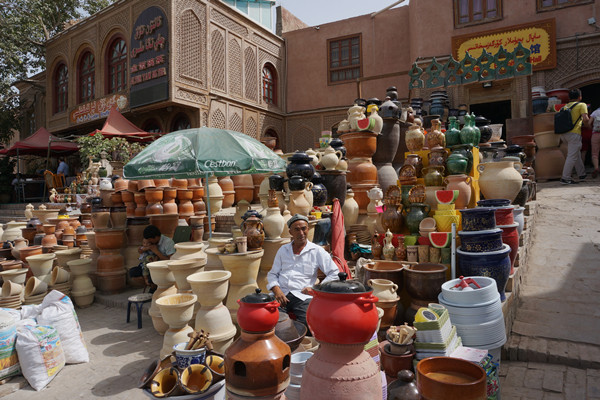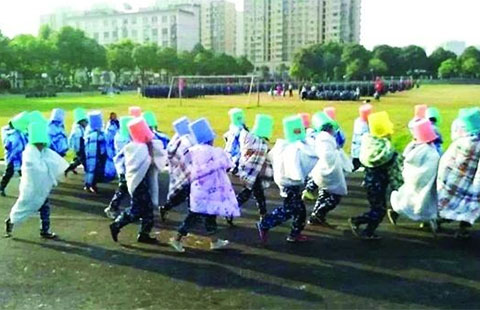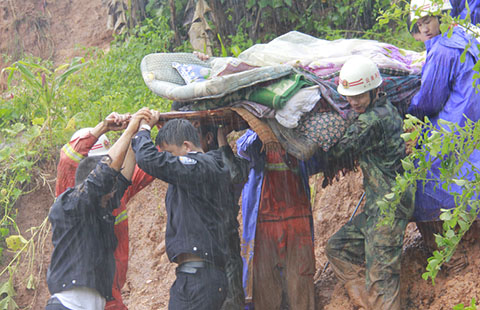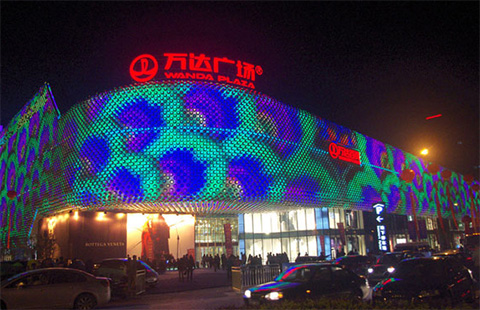
 |
|
A relative looks after Arep Aji's pottery shop in front of the new house in Kashgar's old city. The family has lived in the city for five generations. [Photo by Liu Jing / China Daily] |
A marathon project
Local officials often refer to the renovation project as a "marathon". Located in an area frequently hit by earth tremors, the old houses were dilapidated and extremely vulnerable to earthquakes and fires. The local government has invested about 7 billion yuan ($1.1 billion) to fund the project, which is scheduled to be completed in 2017 and will cover 65,000 households and all 220,000 residents.
Arep used to live in a low, shabby house with no gas or indoor plumbing. "We had to build the toilet on the roof and empty it late at night when our neighbors were asleep to avoid embarrassment," he said.
He now lives in a new home that has more than 10 rooms and is fitted with modern amenities. "It's much better than my old house, and I can use the open space in front of the house to display my products," he said.
The renovation work is undertaken by both the government and the individual householder. The authorities help the residents to build the main structure of the house, while the residents decorate them - including the roof, doors, windows and handrails - in accordance with the original architectural and cultural characteristics and the traditional way of life.
Abibula Yasen, the official in charge of the project, said the work is extremely time-consuming because the design process is conducted on a "one-on-one" basis, and the designers have to produce plans that combine the building's original appearance and the owner's wishes.
The design of Arep's house changed more than 10 times. "I remember that the designers showed me the blueprint, but I felt the living room would be too small for all our carpets. They constantly modified the design until I was satisfied," he said.
"I shed tears when I saw the new house," he said. "I thought of my late grandpa. He would have jumped with joy if he had seen it."








